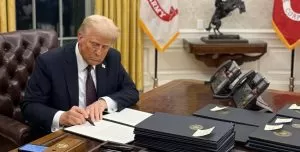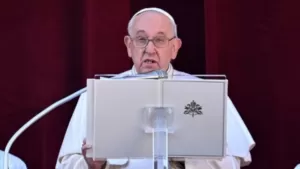Burial Date of Late Pope Francis Set for April 26, 2025, at Santa Maria Maggiore

VATICAN CITY – The Vatican has announced that the funeral of Pope Francis, who passed away on April 21, 2025, at the age of 88, will take place on Saturday, April 26, 2025, at St. Peter’s Basilica. While the exact moment of burial has not been detailed in official statements, Vatican tradition dictates that the burial typically follows immediately after the funeral Mass, placing the interment on or around the same day. In a historic break from centuries of tradition, Pope Francis will be laid to rest at the Basilica of Santa Maria Maggiore in Rome, fulfilling his personal wish for a simple burial at a site of deep spiritual significance to him.
A Papal Funeral Steeped in Tradition
The funeral Mass, scheduled for 9:00 AM on April 26, will be held in St. Peter’s Square, presided over by Cardinal Giovanni Battista Re, Dean of the College of Cardinals, in accordance with Vatican protocol. The ceremony will follow the rites outlined in the Ordo Exsequiarum Romani Pontificis, the liturgical book governing papal funerals, updated by Pope Francis himself to reflect his preference for simplicity. The Mass is expected to draw millions of pilgrims, world leaders, and dignitaries, with extensive security measures in place across Rome.
Following the Mass, Pope Francis’ body will be transported from St. Peter’s Basilica to the Basilica of Santa Maria Maggiore, a journey of approximately 4 kilometers through the heart of Rome. The procession will likely pass key landmarks, allowing Romans and visitors to pay their final respects. The Vatican has confirmed that the late pope’s body will be placed in a single wooden coffin lined with zinc, eschewing the traditional triple-casket burial of past pontiffs. This choice underscores Francis’ lifelong commitment to humility and his rejection of ostentatious displays, even in death.
A Historic Burial at Santa Maria Maggiore
Pope Francis’ decision to be buried at Santa Maria Maggiore marks a significant departure from the custom of interring popes in the Vatican Grottoes beneath St. Peter’s Basilica, where most of his predecessors, including St. John Paul II and Benedict XVI, rest. The Basilica of Santa Maria Maggiore, one of Rome’s four major basilicas, held profound personal significance for Francis. Born Jorge Mario Bergoglio in Buenos Aires, Argentina, he frequently visited the basilica during his trips to Rome as a cardinal and later as pope, often praying before the ancient Marian icon Salus Populi Romani (Protector of the Roman People).
The tomb itself will be modest, located in the ground near the Pauline Chapel, close to the Salus Populi Romani icon. In keeping with his wishes, the sepulcher will bear only the inscription “Franciscus,” reflecting his desire for simplicity. Vatican officials have noted that the burial site was prepared in advance, per Francis’ explicit instructions, ensuring that his final resting place aligns with his spiritual devotion to the Virgin Mary.
The Timeline of Mourning
Pope Francis’ death on April 21, 2025, triggered the Novemdiales, a nine-day period of official mourning observed by the Catholic Church. His body has been lying in state in St. Peter’s Basilica since April 23, allowing the faithful to pay their respects. Vatican sources report that over 500,000 people have already visited, with queues stretching across St. Peter’s Square. The lying-in-state will continue until the morning of the funeral, after which the basilica will be closed to the public to prepare for the Mass.
According to the Universi Dominici Gregis, the apostolic constitution governing papal transitions, the burial of a pope typically occurs between the fourth and sixth day after death. The scheduling of the funeral on April 26 aligns with this tradition, as it falls five days after Francis’ passing. The burial is expected to take place shortly after the funeral, likely in a private ceremony at Santa Maria Maggiore attended by a small group of cardinals, Vatican officials, and close aides.
A Legacy of Simplicity and Reform
Pope Francis, the first Jesuit pope and the first from the Americas, reigned for 12 years, leaving an indelible mark on the Catholic Church. His papacy was defined by efforts to reform the Church’s governance, promote interfaith dialogue, and advocate for the poor and marginalized. His decision to forgo a Vatican burial reflects the same humility that characterized his life, from his choice to live in the modest Casa Santa Marta residence rather than the Apostolic Palace to his frequent outreach to the disenfranchised.
The choice of Santa Maria Maggiore also carries symbolic weight. As a global figure who sought to bridge divides, Francis’ burial near a universal symbol of Marian devotion underscores his emphasis on unity and compassion. The basilica, one of the oldest churches in Rome, has long been a site of pilgrimage, and Francis’ tomb is expected to become a focal point for devotees worldwide.
Global Response and the Path Ahead
The death of Pope Francis has prompted an outpouring of grief across the globe. World leaders, including U.S. President Joseph Biden and U.N. Secretary-General António Guterres, have issued statements praising his moral leadership. In Argentina, a national day of mourning was declared, with thousands gathering at the Metropolitan Cathedral of Buenos Aires, where Francis served as archbishop before his election as pope.
As the Church prepares for the conclave to elect Francis’ successor, expected to begin around May 1, 2025, the focus remains on honoring his legacy. The Vatican has urged the faithful to respect the solemnity of the occasion, discouraging speculation about the conclave until the Novemdiales conclude.
For those seeking to follow developments, the Vatican’s official website (vatican.va) and accredited news outlets such as Vatican News will provide updates on the funeral and burial proceedings. The ceremony at St. Peter’s Basilica will be broadcast live, ensuring that millions worldwide can join in commemorating the life of a pope who sought to bring the Church closer to the people.
In the words of Cardinal Pietro Parolin, Vatican Secretary of State, “Pope Francis was a shepherd who walked with his flock, and now he rests with the Mother of God, whom he loved so dearly.” His burial on April 26, 2025, will close a chapter in the Church’s history while opening a new one, as the world reflects on his enduring legacy.






